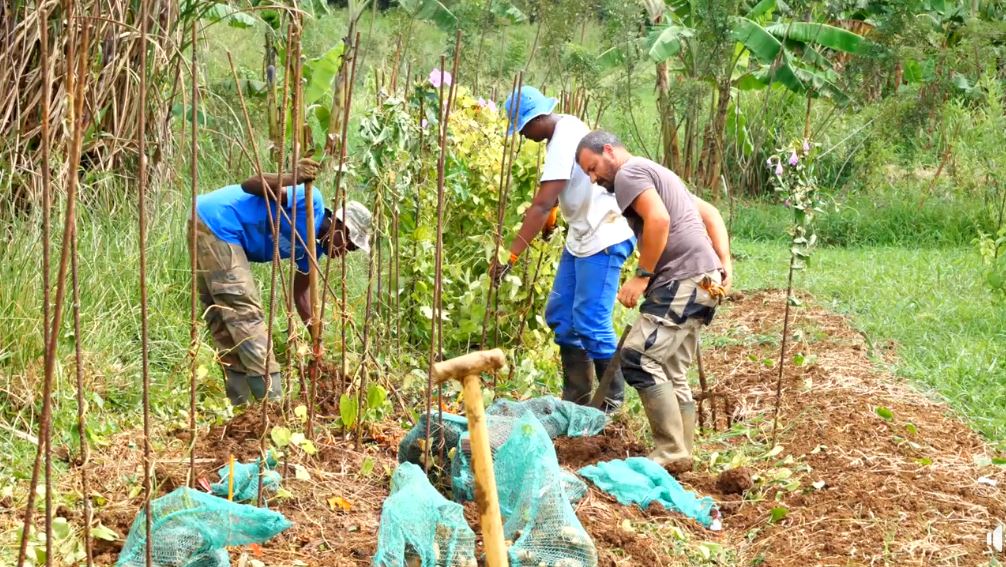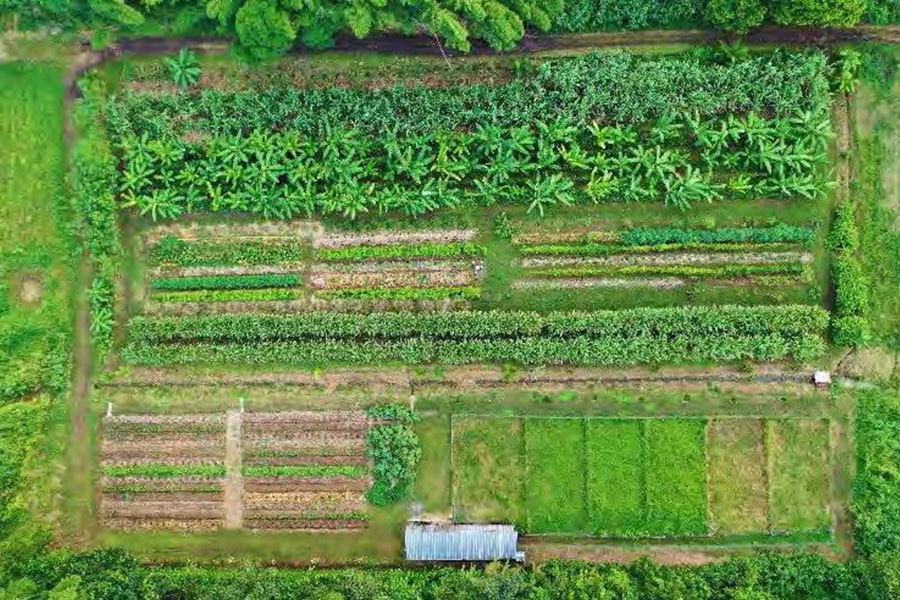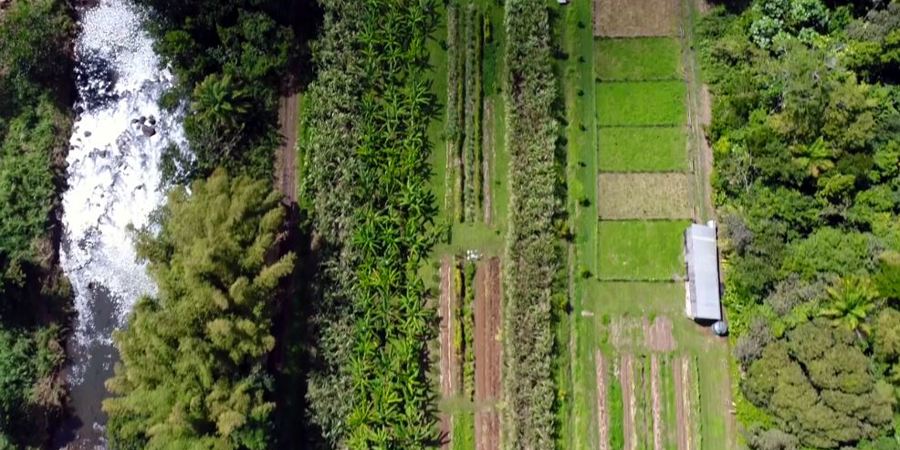Scalable solutions for climate resilience
by Carla Barlagne, Jean-Marc Blazy & Stan Selbonne, INRAE Research Unit, Guadeloupe
Context and issues
In tropical island regions such as Guadeloupe, increasingly intense droughts and powerful hurricanes are becoming the norm. So what can be done to ensure food self-sufficiency and agricultural resilience here and in other areas at the sharp end of climate change?
One solution is climate-smart agriculture (CSA), a concept that aims to meet the challenge of feeding 9.7 billion people by 2050 (the predicted global population) by adapting systems to better cope with climate change and mitigate anthropogenic [1] greenhouse gas emissions.
While there have been many technical solutions proposed, based on agroecology and the bio economy [2], that will create a more resilient farming future, not much has been done to address obstacles to large-scale transition. To take a step forward and guide public policies we need to develop methods for modelling possible scenarios that will cope with the constraints imposed by climate change, and to identify the relevant financial and political levers.
Methods
To this end, an innovative set of methods has been proposed for designing CSA development scenarios on a territorial scale. In Guadeloupe, for example, a multi-scale, transdisciplinary framework with five stages has been developed, which includes:
- construction of a typology of farms [3];
- diagnosis of farm vulnerability to climate change;
- design of a prototype climate-smart agricultural system (the KaruSmart micro-farm – see below);
- field experimentation; and
- bioeconomic modelling of scenarios
The KaruSmart micro-farm is part of the Guadeloupe Innovation Hub and is certified organic. It uses innovative production systems based solely on agroecology and bio economy principles. It has provided economic, environmental and social benchmarks for the performance of innovative systems designed to cope with climate change.
These benchmarks have been used as the boundary for a mathematical model that sets the conditions under which this new form of climate-smart agriculture could be adopted on a large scale.

Results
The prototype developed has the potential to reduce the impacts of climate change, mitigate greenhouse gases and increase the region's food self-sufficiency. However, the results revealed a number of 'lock-in' effects that need to be eased. These include a need for:
- more regional labour;
- redirecting public incentives towards agroecological systems;
- increasing the profitability of CSA products (by introducing a low-carbon label or carbon tax, for example);
- improving farmers' work efficiency and reducing their risk aversion (for example through technical and financial support).
Potential positive impact
In the best-case scenario:
- the potential impact of climate risks is reduced by 12.5%.
- nutritional performance on a regional scale is tripled to 6 people fed per hectare per year
- greenhouse gas balance goes from net emissions [4] to an average sequestration of 0.7 tCO2eq/ha/year [5]
- labour productivity increases to €26.5/h (+14%).
Currently, the public cost of mitigating 1 tCO2eq is €432 – nearly €400 more – demonstrating the financial benefit that substantial investment in new forms of agriculture can make where climate change is at the heart of the issues.
As long as adequate measures are in place, the proposed innovative systems could be adopted on a very large scale and lead to multi-performance agriculture.
Next steps for the research
The results of the research are being used to fuel discussions with those involved in the agricultural transition and political decision-makers, focussing on how to speed up the development of climate-smart agriculture.

Useful information:
Selbonne, S., Guindé, L., Belmadani, A., Bonine, C., Causeret, F., Duval, M., Sierra, J., Blazy, JM., 2022. Designing scenarios for upscaling climate-smart agriculture on a small tropical island. Agricultural Systems 199, 103408.
https://doi.org/10.1016/j.agsy.2022.103408
Selbonne, S., Guindé, L., Causeret, F., Bajazet, T., Desfontaines, L., Duval, M., Sierra, J., Solvar, F., Tournebize, R., and Blazy, J.-M. (2023). Co-Design and Experimentation of a Prototype of Agroecological Micro-Farm Meeting the Objectives Set by Climate-Smart Agriculture. Agriculture 13.
https://doi.org/10.3390/agriculture13010159
Find out more about KaruSmart (in French):
Projet Explorer: l'agriculture climato intelligente: https://www.facebook.com/guadeloupe.projet.explorer.97
Short films:
La KaruSmart: la micro-ferme climato intelligente guadeloupéenne: https://fb.watch/mszGxL9p8l/
Developing a climate-smart farm: https://youtu.be/rR2I-1YPGcQ
Glossary:
[1] Anthropogenic: environmental change caused or influenced by people, either directly or indirectly (https://www.usgs.gov/news/earthword-anthropogenic)
[2] bioeconomy: research and innovation in the biological sciences that creates economic activity and public benefit (https://youmatter.world/en/definition/bioeconomy-definition)
[3] typology of farms: farms classification by general types of activity, size, etc
[4] Net greenhouse gas emissions refers to a point of balance where carbon released by human activities is the same as carbon removed from the atmosphere
[5] tCO2eq/ha/year: equivalent tons of CO2 (carbon) per hectare per year
Images from KaruSmart ©INRAE




